Hotel Dangjin (당진관광호텔)
16.9Km 2823 2020-04-06
192, Banchon-ro, Dangjin-si, Chungcheongnam-do
+82-41-356-5757
Hotel Dangjin is geared toward both business travelers and leisure tourists. As the only hotel in the Dangjin region of Chungcheongnam-do, it is situated near public transportation terminals and the area’s industrial zone. Other convenient facilities are also located close to the hotel, allowing guests to handle errands quickly.
The interior of the hotel is modern and sophisticated where a comfortable home-away-from-home experience is possible and the facilities come equipped with complimentary high-speed internet access and staff answering to your tourism needs 24/7.
The banquet halls on 7th and 8th floors are suitable for all kinds of events, including meetings, gatherings, birthday parties, workshops, and much more. Also note that guests staying for over one month will be provided with a mini laundry machine.
Hapdeokje Reservoir (합덕제)
17.4Km 0 2023-07-17
395 Hapdeok-ri, Hapdeok-eup, Dangjin-si, Chungcheongnam-do
Hapdeokje is a reservoir located in Dangjin, Chungcheongnam-do. Designated as a Chungcheongnam-do Monument in 1989, it is known to have been built in the late Unified Silla period for the irrigation of Yedang Plain (Sodeulgangmun Gate). It attracts many tourists in spring with cherry blossoms and canola flower blossoms and in summer with lotus flowers in full bloom. The Hapdeokje Ecotourism Experience Center (opened in 2021) and Hapdeok Folk Irrigation Museum are located nearby, so you can stop by when traveling in the area.
Hamdeok Catholic Church (합덕성당)
17.5Km 752 2023-06-22
16 , Hapdeokseongdang 2-gil, Dangjin-si, Chungcheongnam-do
Hamdeok Catholic Church was built in 1929 in the gothic style. The church started out as Yangchon Catholic Church in Sanggung-ri, but was moved to the current location by the priest, and renamed Hamdeok Catholic Church. The name was later changed to New Apdeok Catholic Church before being returned to the current Hamdeok Catholic Church.
Yongbongsan Mountain (용봉산)
17.6Km 68795 2024-01-15
Sangha-ri, Hongbuk-eup, Hongseong-gun, Chungcheongnam-do
Yongbongsan Mountain is relatively small mountain, reaching a x_height of just 381 meters, but is filled with beautiful rocky outcroppings and peaks. The mountain's name comes from its ridgeline, resembling a dragon with the head of a phoenix. The mountain is home to a wide range of Korean plants, including Korean pine trees, and cultural heritages such as Yongbongsa Temple.
Seosan Buseoksa Temple (부석사(서산))
17.9Km 16153 2021-11-23
243, Buseoksa-gil, Seosan-si, Chungcheongnam-do
+82-41-662-3824
Located on Dobisan Mountain in Seosan, Chungcheongnam-do, Buseoksa Temple was built by the Great Monk Uisang in 677, the 17th year of King Munmu of Silla, and was later rebuilt by Great Monk Muhak during the Joseon dynasty. The temple houses eight seated Buddha statues and attracts many visitors due to its magnificent surrounding scenery.
Solmoe Holy Ground (솔뫼성지)
18.0Km 8698 2020-02-10
132, Solmoe-ro, Ugang-myeon, Dangjin-si, Chungcheongnam-do
+82-41-362-5021
'Solmeo' gets its name from a small cluster of pine trees. The first Korean priest, Saint Kim Dae-gun Andrea was born here on August 21, 1821 and when he was seven, he escaped persecution by following his grandfather to Handeok-dong, Yongin (Golmaemashil). Furthermore, it is where four generations of ancestors such as his great-grandfather Kim Jin-hu (martyred in 1814), great uncle Kim Han-hyun (1816), father Kim Jae-jun (1839), and priest Kim Dae-gun himself (martyred in 1846) lived.
He was chosen as a theological student in Golmaemashil and studied in Macao. In 1846, he was ordained as priest by Bishop Ferréol in Shanghai, Kim Ga Hang Cathedral. After his return to Korea, he worked in Yongin until September 1846 when he was tried, executed and died a martyr when he was only 26. Pope Johannes Paulus II appointed him a saint during his visit to Korea in May 1984. In Solmoe, Priest Kim Dae-gun’s statue and a memorial stands underneath the pine trees and his remains are placed inside the nearby cathedral.
House and Tomb of Kim Jeong-hui (추사김정희선생고택·묘)
18.9Km 20029 2024-02-21
261, Chusagotaek-ro, Sinam-myeon, Yesan-gun, Chungcheongnam-do
This house and tomb are where Kim Jeong-hui (pen name: Chusa, 1786-1856), a Joseon-era scholar and artist, lived and was laid to rest. Chusa Memorial Hall and Chusa Experience Center are found next to the house. After studying in Qing China, Kim Jeong-hui served in multiple government posts. He is best known for his unique calligraphical style, which bears his courtesy name (Chusa), and many works of art that survive to this day. The Experience Center offers traditional art experiences inspired by Kim Jeong-hui’s works.
House of Chusa (추사고택)
19.0Km 14765 2022-12-28
261, Chusagotaek-ro, Yesan-gun, Chungcheongnam-do
+82-41-339-8248
House of Chusa, Chusa Gotaek in Korean, is the traditional Korean house of the renowned scholar and calligrapher Chusa, also known as Kim Jeong-hui. This old house is known to have been constructed by the great-grandfather of Chusa, Kim Han-Sin.
The Korean-style house compound (266.11 m²) consists of munganchae (a guesthouse), soseuldaemun (a high gate), sarangchae (ㄱ-shaped men's quarters), anchae (ㅁ-shaped women’s quarters) and a shrine where the remains of Chusa are enshrined. Theㄱ-shaped Sarangchae stretches for one kan (traditional measuring unit) to the south and 2 kans to the east and is comprised of two rooms and a daecheongmaru (living area). The Anchae consists of a six-kan daecheongmaru and two one-kan rooms.
Located on the ground is a tomb where Chusa’s great-grandfather (Kim Han-Sin) and his wife (Hwasun Princess) are buried. Nearby, visitors will see a gate that was constructed to commemorate Princess Hwasun’s faithfulness to her husband.
Located approximately 600 meters to the north of the old house is a lacebark pine tree, which was designated as a Natural Monument. The lacebark pine tree, originally from northern China, is among the few of its kind in Korea. It is said that Chusa snuck the pine across the border from China (formerly, the Qing dynasty) into the country when he was 25 years old and planted it at the tomb of his great-grandfather. Originally, the tree had three branches, but two were broken and the third branch was damaged. In 1980, the damaged branch was treated and since then, the tree has been kept under strong protection.
Yesan Hwaamsa Temple (화암사 (예산)
19.2Km 7473 2020-04-04
21-29, Yonggung 1-gil, Yesan-gun, Chungcheongnam-do
+82-41-332-9250
Hwaamsa Temple is located near Joseon dynasty's scholar and writer Kim Jeong-hui's, also referred to his pen name Chusa, house. The temple has ties with the ancient writer, as the temple is known to have been repaired and renovated by Kim Jeong-hui's great grandfather. There are no records that explains the foundation of Hwaamsa Temple, and only a timeline of its reconstruction can be found in "Records of Hwaamsa Temple Restoration" plaque, which is displayed in Sudeoksa Temple Museum. The timeline was recorded by Kim Myeong-hee in 1848, and written by Kim Seong-hee, and carved by Cho Seok-shin. The name "Hwaamsa" was given by King Yeongjo (r. 1724-1776).
Seosan Palbongsan Mountain (팔봉산(서산))
19.3Km 48765 2021-04-30
Yanggil-ri, Seosan-si, Chungcheongnam-do
+82-41-662-2004
Palbongsan Mountain stretches out like a folding screen and stands high with great spirit. It is known that the mountain was named Palbong (“eight peaks” in Korean) because of its eight peaks standing in a row. There are actually nine peaks, but the smallest was not included. Legend says the smallest weeps over its exclusion at the end of every December. The third peak is the highest, standing at 362 meters with a beautiful view and crisp air, making it ideal for hiking (3-hour course) and resting at the top. There is another mountain of the same name in Hongcheon, so this mountain is usually referred to as “Seosan Palbongsan.”

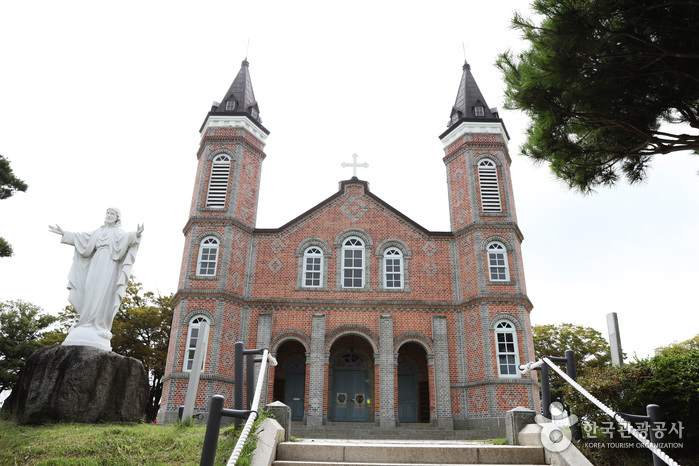
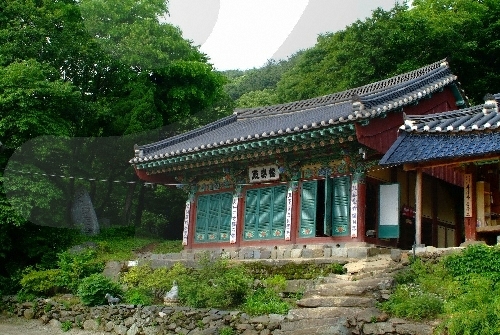
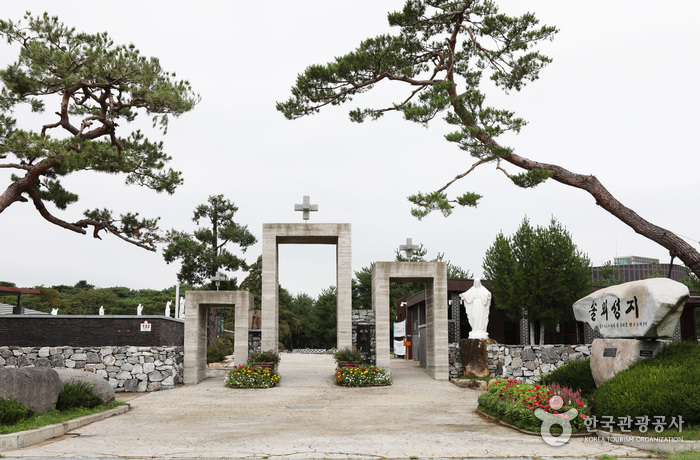
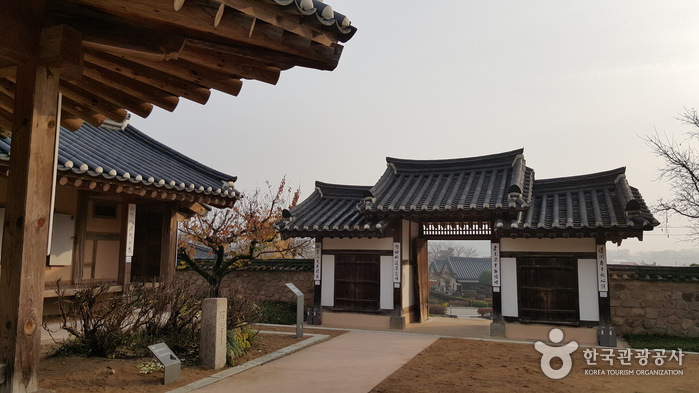
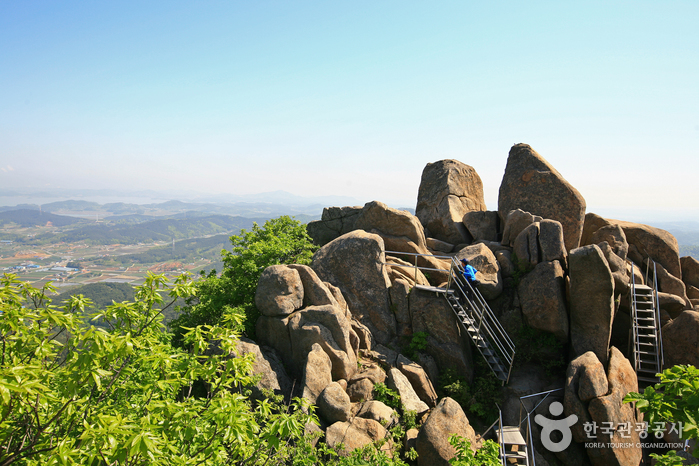
 English
English
 한국어
한국어 日本語
日本語 中文(简体)
中文(简体) Deutsch
Deutsch Français
Français Español
Español Русский
Русский